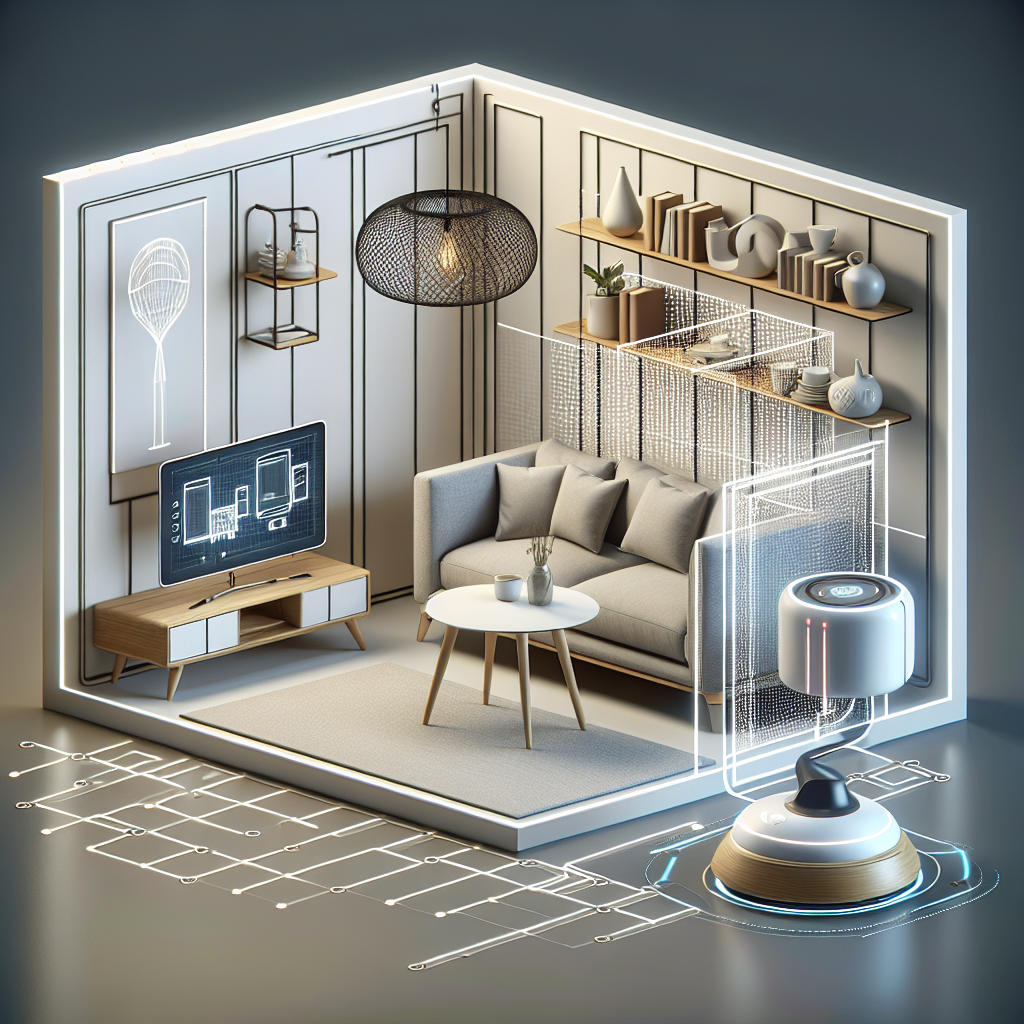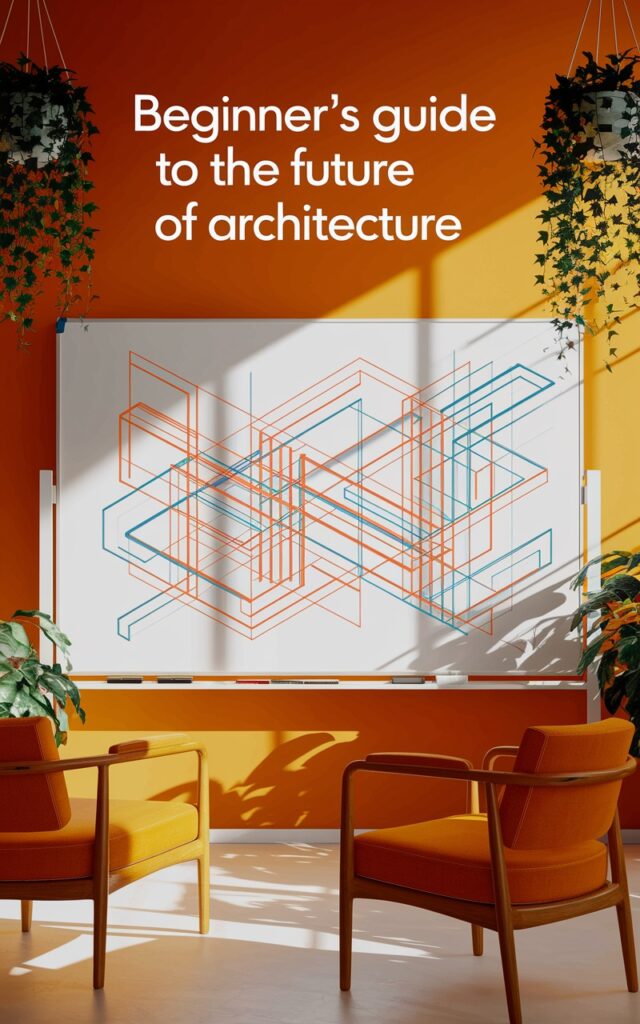Imagine standing in an empty room, overwhelmed by endless design possibilities, only to have your smartphone suggest the perfect layout that somehow captures exactly what you’ve been envisioning but couldn’t articulate. *The future of interior design isn’t just digital—it’s personally algorithmic.* As our homes become extensions of our digital identities, parametric design algorithms are revolutionizing how we conceptualize living spaces, transforming abstract personal preferences into precise design specifications. These intelligent systems analyze thousands of design variables—from spatial constraints to lighting conditions—creating customized solutions that traditional design approaches simply cannot match in efficiency or personalization. What once required weeks of consultation with expensive designers can now potentially happen in moments through algorithmic interpretation of your unique style preferences and functional needs.I remember the day I walked into my new apartment—empty walls, bare floors, and limitless possibility. Standing there, I felt equal parts excitement and overwhelming anxiety. Where would the couch go? Which wall deserved the art? Would my favorite reading chair fit by the window? What if, instead of agonizing over these decisions, I could simply describe my dream space and have technology visualize it perfectly? This fantasy is rapidly becoming reality as algorithms transform how we design our most intimate spaces.
*The future of interior design isn’t just digital—it’s algorithmic, where personalized spaces emerge from the marriage of human desire and computational precision.*
When Algorithms Meet Interior Design
The idea of surrendering your living room design to an algorithm might initially seem cold or impersonal. After all, our homes are deeply personal spaces that reflect our identities and comfort needs. Yet design automation is revolutionizing how we conceptualize, plan, and implement interior spaces—often with surprisingly human results.
These sophisticated systems go far beyond simple furniture arrangement. They integrate principles of design theory, spatial considerations, and personal preference data to generate layouts that many professional designers might envy. Modern algorithmic design tools consider variables like:
- Traffic flow patterns through your space
- Natural light optimization throughout the day
- Ideal furniture dimensions for your specific room measurements
- Ergonomic principles for comfortable living
- Color theory and visual harmony across elements
Perhaps most impressively, these systems learn from your feedback, continually refining recommendations based on your responses to suggested designs.
From Chaos to Clarity: The Mathematics of Beautiful Spaces
At its core, algorithmic layout planning treats your living room as a complex mathematical problem waiting to be solved. That couch you love? It becomes a rectangular parameter with specific dimensions. Your desire for a conversation area becomes a proximity constraint. Your need for a home office nook translates to functional zoning requirements.
Imagine having unexpected overnight guests and needing to quickly reconfigure your living room to accommodate a sleeper sofa. An algorithm could instantly generate multiple layouts that maintain flow while incorporating this new element—something that might take a human designer hours to conceptualize.
The Science Behind the Art: Parametric Design in Your Living Room
Parametric design sits at the heart of algorithmic interior planning. This approach uses parameters (variables) and mathematical relationships to define and adjust design elements. Rather than creating static designs, parametric systems generate solutions that automatically adapt when conditions change.
Think of it like a recipe that adjusts itself. If you tell the system you want more natural light prioritized, every element shifts in response—furniture placement, mirror positioning, even suggested window treatment options change to optimize for that parameter.
How Parametric Design Transforms Living Spaces
Parametric furniture placement excels at solving spatial puzzles that human designers might approach through intuition alone. For example, when a designer recommends placing your sofa “about two feet” from the wall, an algorithm can calculate the precise optimal distance based on room proportions, adjacent furniture, and traffic patterns.
Real-world application of parametric design includes:
- Automatically adjusting furniture arrangements when you add or remove pieces
- Calculating perfect distances between elements for both aesthetic balance and functionality
- Generating multiple variations of a design that all satisfy your core requirements
- Optimizing arrangements for specific activities (entertainment, work, relaxation) while maintaining coherence
Consider how your living room might serve different purposes throughout the day. A parametric system could suggest a primary layout with movable elements that easily transition between “morning coffee mode” and “evening entertainment configuration” with minimal effort.
Beyond One-Size-Fits-All: Personalization Through Code
Standardized furniture packages and cookie-cutter layouts are becoming relics of the past. Today’s algorithmic design systems excel at personalization with code, crafting spaces that are uniquely yours.
The system might begin with analyzing your existing furniture and style preferences. Do you have primarily mid-century modern pieces? Do you favor minimalism or maximalism? Are there physical considerations like accessibility that need prioritization? The algorithm processes these inputs to create personalized recommendations rather than generic templates.
The Human-Algorithm Collaboration
The most effective systems don’t remove humans from the equation—they enhance human creativity through powerful computational assistance. This collaboration typically works through:
- You providing initial preferences, constraints, and goals
- The algorithm generating multiple potential solutions
- You providing feedback on what you like or dislike about each option
- The system learning from this feedback to refine future recommendations
This iterative process creates a design conversation that combines your intuitive preferences with the algorithm’s analytical capabilities. The result is often more sophisticated than what either could achieve alone.
Space Optimization: The Computational Advantage
One area where algorithms truly shine is in space optimization—finding arrangements that make the absolute most of available square footage without creating cramped or dysfunctional layouts.
Humans are notoriously poor at mentally visualizing and comparing multiple spatial configurations. We tend to fixate on familiar arrangements or struggle to imagine how furniture will actually fit and function in space. Algorithms can simultaneously evaluate hundreds of possible arrangements against multiple criteria.
Small Spaces, Big Possibilities
This computational advantage becomes particularly valuable in smaller living spaces. An algorithm might discover that rotating your sofa 15 degrees, rather than placing it parallel to the wall, creates a conversation area while improving traffic flow—a subtle optimization a human might miss.
For urban dwellers with compact apartments, these tools can be transformative. The system might suggest:
- Multi-functional furniture pieces that serve different needs throughout the day
- Optimal placement for expandable or transformable furniture
- Strategic mirror placement to enhance perceptions of space
- Clever storage solutions integrated into the overall design concept
One user reported that an algorithmic design system helped her discover she could fit both a dining area and a home office in her 450 square foot studio—something three human designers had told her was impossible.
The Future: AI in Architecture and Interior Design
Current algorithmic design tools represent just the beginning. As AI in architecture advances, we’re moving toward systems that can:
- Generate photorealistic visualizations of proposed spaces
- Incorporate augmented reality to let you “walk through” potential layouts
- Forecast how your needs might evolve over time and suggest adaptable designs
- Automatically source furniture and décor that matches your design vision and budget
These developments suggest a future where your living room doesn’t just accommodate your current lifestyle—it anticipates and adapts to your evolving needs. Imagine furniture that rearranges itself based on time of day, or walls that shift to create new spaces when needed. While these scenarios remain theoretical, the algorithmic foundations are being built today.
The Question of Creativity and Soul
A common concern about algorithmic design is whether it can capture the ineffable qualities that make a space feel truly special—the creative spark, the emotional resonance, the personality. This is where the human-algorithm partnership becomes most valuable.
Algorithms excel at optimization and possibility generation, while humans bring contextual understanding, emotional intelligence, and aesthetic judgment. The most successful spaces will emerge from this collaboration, combining computational power with human creativity.
Is an Algorithm in Your Decorating Future?
So can an algorithm design your dream living room? The answer is nuanced. While technology can generate remarkably sophisticated and personalized designs, the most successful outcomes will likely involve human-algorithm collaboration rather than fully automated solutions.
As these tools become more accessible, they promise to democratize good design, bringing professional-quality spatial planning to those without access to high-end interior designers. They’ll help us visualize possibilities beyond our usual thinking, optimize our spaces for both beauty and function, and perhaps most importantly, reduce the anxiety of staring at an empty room wondering where to begin.
The algorithm won’t replace your personal taste or the joy of making a space your own—but it might help you express that taste more effectively than you ever could alone. And in that collaboration lies the true potential of algorithmic design: not to replace human creativity, but to expand what’s humanly possible.In Summary: Elevate Your Space, Elevate Your Potential
From understanding the interplay of ceilings, walls, and facades to harnessing design as a tool for transformation, we’ve explored how spaces shape experiences. Key takeaways include:
Now it’s your turn. Reflect: What invisible barriers can you turn into catalysts for innovation? Share: Drop your boldest ideas in the comments. Act: Whether sketching a vision or redefining a corner of your world, let today spark your creative journey.
The world needs more thoughtful spaces—and the courage to build them begins with you. Ready to leave your mark? 🎨✨




